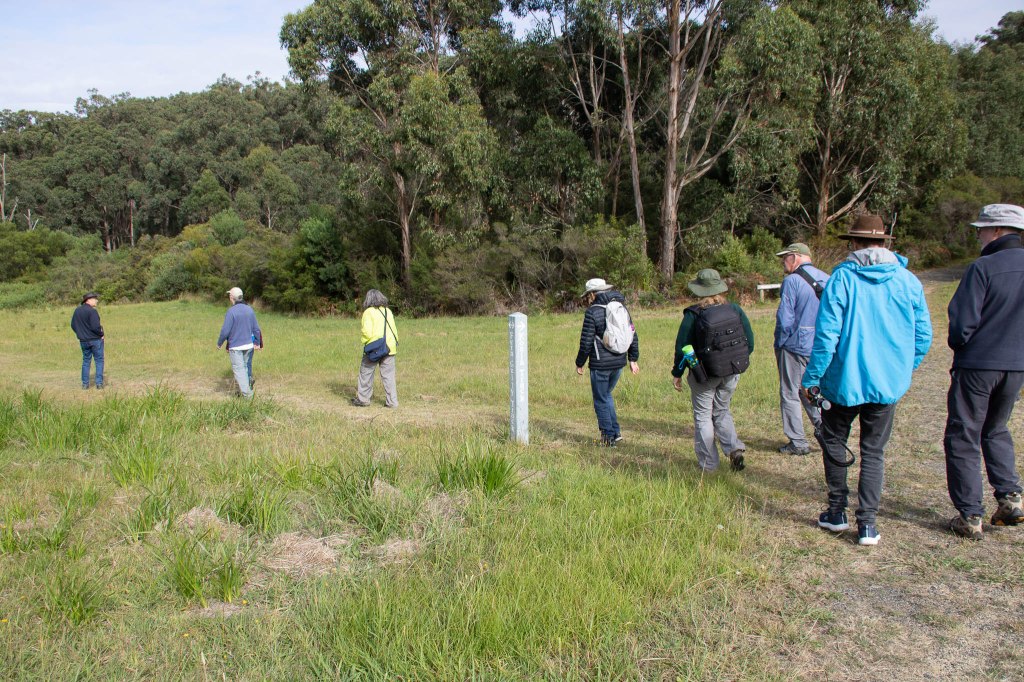15 March 2021
Photographer: Danika Sanderson

It’s quite a drive from Melbourne but the lifting of the covid-19 restrictions was a considerable spur and 18 people assembled in the small parking space near the start of the Wuchatsh reserve walk. We had been a long time since the previous outing. The weather was favourable, windless and overcast, and bird calls reached us from the bush.

Car park birding was mostly by ear but Australian Magpies were present in the adjacent paddocks and an immature Grey Butcher bird used the near fence for pounce hunting. The trail was almost entirely only for single file but this meant different parts of our party were able to study different species as we and the birds moved around. The tall eucalypts filled with the calls of a flock of Crimson Rosellas while the quieter twitters of smaller bush species provided challenges as we tried to locate sources. These included Brown Thornbill, White-throated Treecreeper and the louder Golden Whistler and Grey Shrike-thrush. Eastern Whipbirds challenged with their ventriloqual powers, but, as very often, none were sighted.

With the time available our walk was simply out and return but when we did a bird call at lunch in Lang Lang we were pleased to realize the group had recorded 35 species.

We drove from lunch to Jam Jerrup and, again, parked near the start of the walk, which was this time along the beach and past the mangroves near the water’s edge. Several people had a great arrival when they recorded an adult White-bellied Sea-Eagle flying low past the car park. Not many birds initially in the beach walk although the coastal bush reserve included a calling Little Wattlebird. There were small twitters from the mangrove stands but no one could get useful sightings. Finally arrived at the point we worked on our ID skills to distinguish different tern species. Crested, Caspian and Common Gull-billed Terns were roosting on the tip of the spit and those with scopes were able to distinguish between the recently separated Asian and Australian subspecies of the Gull-billed – were they now separate species? Follow this Splitters vs. Lumpers debate. Curlew Sandpipers going into breeding plumage were a first sighting for most who had only seen them in their muted non-breeding colours. Also present were Red-necked Stints, a few Red-capped Plovers, 10 – 20 Australian Pied Oystercatchers as well as Silver and Pacific Gulls and a lone Great Egret. As time was passing we decided to have a bird call and the rallying cry went up. Timing is everything. In swept flocks of shorebirds, swirling, alighting and lifting again. ‘Bird call’ was renamed ‘Call in birds’ as everyone raised their binoculars and glowed with delight. Visitors were similarly entranced and we were so pleased to include Sean Dooley and his small party watching the spectacle.


When we could no longer delay we started the long walk back to the cars. The tide had risen and waves were now up to the fallen timber which had been well clear of the water on the way out. A careful scramble got everyone through and dry. One final pleasant surprise lay around the bend. A solo birdwatcher with a scope stood by the paddock fence and offered us great scope views of a Pectoral Sandpiper on a slight rise in the watery wetland. It foraged beside a couple of Masked Lapwing. On that note we headed back to the cars and the challenges of post-restriction traffic, buoyed by memories of a good day’s birding. The final species counts were Wuchatsh 35, Stockyard 28 and a cumulative count for the day of 59 species.
Diane Tweeddale, Coordinator BirdLife Melbourne weekday outings